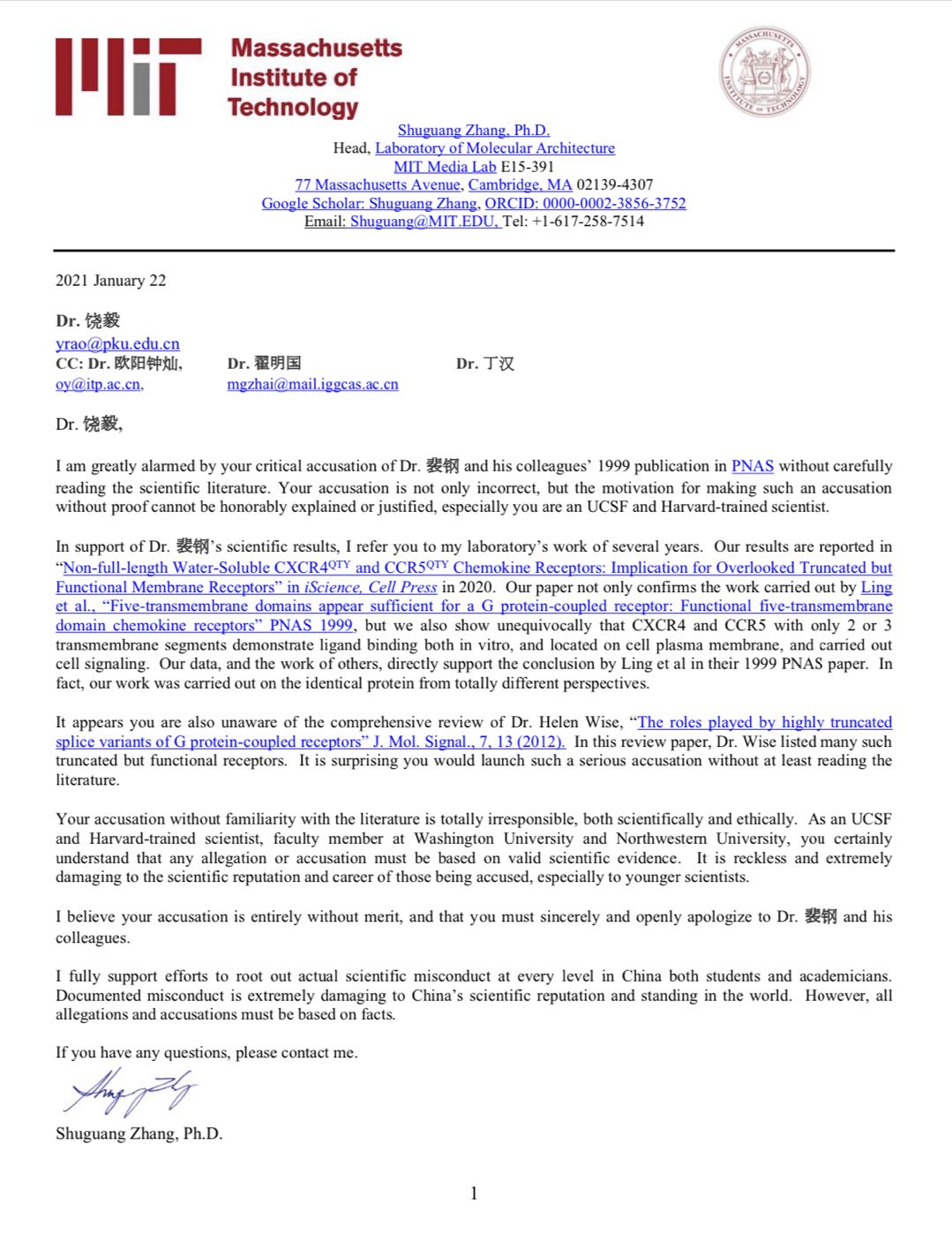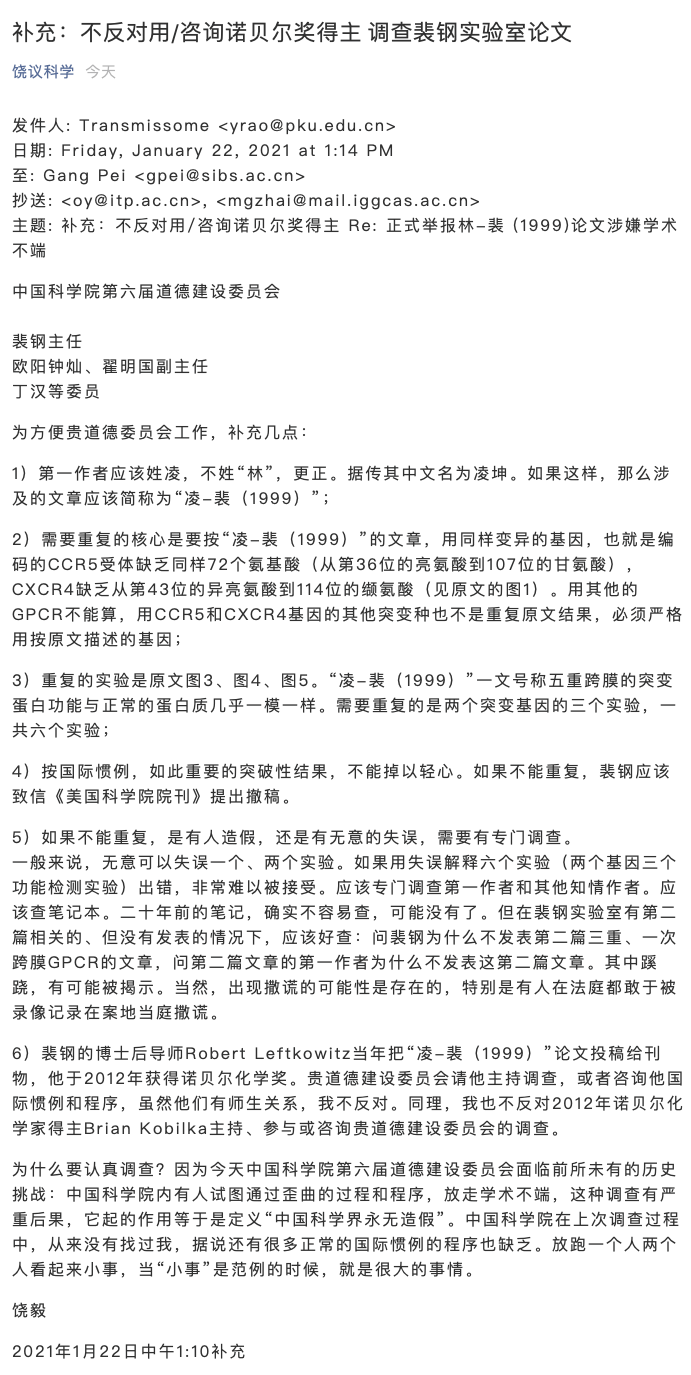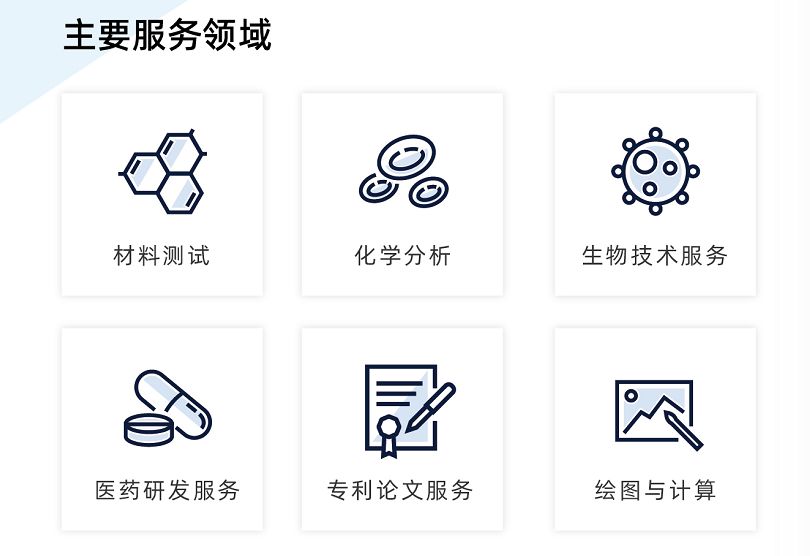1. Baldwin, E. L., Wegorzewska, I. N., Flora, M. & Wu, T. J. Regulation of type II luteinizing hormone-releasing hormone (LHRH-II) gene expression by the processed peptide of LHRH-I, LHRH-(1-5) in endometrial cells. Exp Biol Med (Maywood) 232, 146-155 (2007).
2. Belenikin, M. S., Costantino, G., Palyulin, V. A., Pellicciari, R. & Zefirov, N. S. Molecular modeling of the mGluR1 metabotropic glutamate receptor transmembrane domain and construction of the model of its dimer. Dokl Biochem Biophys 393, 341-345, doi:10.1023/b:dobi.0000010299.35247.fb (2003).
3. Bellucci, F. et al. Pharmacological evaluation of alpha and beta human tachykinin NK(2) receptor splice variants expressed in CHO cells. Eur J Pharmacol 499, 229-238, doi:10.1016/j.ejphar.2004.07.075 (2004).
4. Biard-Piechaczyk, M. et al. Caspase-dependent apoptosis of cells expressing the chemokine receptor CXCR4 is induced by cell membrane-associated human immunodeficiency virus type 1 envelope glycoprotein (gp120). Virology 268, 329-344, doi:10.1006/viro.1999.0151 (2000).
5. Bokaei, P. B. et al. Identification and characterization of five-transmembrane isoforms of human vasoactive intestinal peptide and pituitary adenylate cyclase-activating polypeptide receptors. Genomics 88, 791-800, doi:10.1016/j.ygeno.2006.07.008 (2006).
6. Bronowska, A. et al. Molecular dynamics of 5-HT1A and 5-HT2A serotonin receptors with methylated buspirone analogues. J Comput Aided Mol Des 15, 1005-1023, doi:10.1023/a:1014856107486 (2001).
7. Cen, B. et al. Direct binding of beta-arrestins to two distinct intracellular domains of the delta opioid receptor. J Neurochem 76, 1887-1894, doi:10.1046/j.1471-4159.2001.00204.x (2001).
8. Chen, J. et al. CCL18 from tumor-associated macrophages promotes breast cancer metastasis via PITPNM3. Cancer Cell 19, 541-555, doi:10.1016/j.ccr.2011.02.006 (2011).
9. Chen, L., Pei, G. & Zhang, W. An overall picture of chemokine receptors: basic research and drug development. Curr Pharm Des 10, 1045-1055, doi:10.2174/1381612043452749 (2004).
10. Cheng, C. K. & Leung, P. C. Molecular biology of gonadotropin-releasing hormone (GnRH)-I, GnRH-II, and their receptors in humans. Endocr Rev 26, 283-306, doi:10.1210/er.2003-0039 (2005).
11. Cheng, Z. J. et al. beta-arrestin differentially regulates the chemokine receptor CXCR4-mediated signaling and receptor internalization, and this implicates multiple interaction sites between beta-arrestin and CXCR4. J Biol Chem 275, 2479-2485, doi:10.1074/jbc.275.4.2479 (2000).
12. Chilmonczyk, Z. et al. Interaction of 1,2,4-substituted piperazines, new serotonin receptor ligands, with 5-HT1A and 5-HT2A receptors. Farmaco 57, 285-301, doi:10.1016/s0014-827x(02)01205-3 (2002).
13. Desaulniers, A. T., Cederberg, R. A., Lents, C. A. & White, B. R. Expression and Role of Gonadotropin-Releasing Hormone 2 and Its Receptor in Mammals. Front Endocrinol (Lausanne) 8, 269, doi:10.3389/fendo.2017.00269 (2017).
14. Ehlers, A. et al. MHC-linked olfactory receptor loci exhibit polymorphism and contribute to extended HLA/OR-haplotypes. Genome Res 10, 1968-1978, doi:10.1101/gr.10.12.1968 (2000).
15. Eicke, N., Gunthert, A. R., Emons, G. & Grundker, C. GnRH-II agonist [D-Lys6]GnRH-II inhibits the EGF-induced mitogenic signal transduction in human endometrial and ovarian cancer cells. Int J Oncol 29, 1223-1229 (2006).
16. Eicke, N. et al. GnRH-II receptor-like antigenicity in human placenta and in cancers of the human reproductive organs. Eur J Endocrinol 153, 605-612, doi:10.1530/eje.1.02005 (2005).
17. Fan, H. et al. Beta-arrestins 1 and 2 differentially regulate LPS-induced signaling and pro-inflammatory gene expression. Mol Immunol 44, 3092-3099, doi:10.1016/j.molimm.2007.02.009 (2007).
18. Fan, H., Peck, O. M., Tempel, G. E., Halushka, P. V. & Cook, J. A. Toll-like receptor 4 coupled GI protein signaling pathways regulate extracellular signal-regulated kinase phosphorylation and AP-1 activation independent of NFkappaB activation. Shock 22, 57-62, doi:10.1097/01.shk.0000129759.58490.d6 (2004).
19. Fan, H. et al. Differential regulation of lipopolysaccharide and Gram-positive bacteria induced cytokine and chemokine production in splenocytes by Galphai proteins. Biochim Biophys Acta 1763, 1051-1058, doi:10.1016/j.bbamcr.2006.08.003 (2006).
20. Fan, H. et al. Differential regulation of lipopolysaccharide and Gram-positive bacteria induced cytokine and chemokine production in macrophages by Galpha(i) proteins. Immunology 122, 116-123, doi:10.1111/j.1365-2567.2007.02619.x (2007).
21. Fan, H. et al. Lipopolysaccharide- and gram-positive bacteria-induced cellular inflammatory responses: role of heterotrimeric Galpha(i) proteins. Am J Physiol Cell Physiol 289, C293-301, doi:10.1152/ajpcell.00394.2004 (2005).
22. Gaillard, I., Rouquier, S., Chavanieu, A., Mollard, P. & Giorgi, D. Amino-acid changes acquired during evolution by olfactory receptor 912-93 modify the specificity of odorant recognition. Hum Mol Genet 13, 771-780, doi:10.1093/hmg/ddh086 (2004).
23. Grundker, C. & Emons, G. The Role of Gonadotropin-Releasing Hormone in Cancer Cell Proliferation and Metastasis. Front Endocrinol (Lausanne) 8, 187, doi:10.3389/fendo.2017.00187 (2017).
24. Hamatake, M. et al. Ligand-independent higher-order multimerization of CXCR4, a G-protein-coupled chemokine receptor involved in targeted metastasis. Cancer Sci 100, 95-102, doi:10.1111/j.1349-7006.2008.00997.x (2009).
25. Hamdan, F. F., Audet, M., Garneau, P., Pelletier, J. & Bouvier, M. High-throughput screening of G protein-coupled receptor antagonists using a bioluminescence resonance energy transfer 1-based beta-arrestin2 recruitment assay. J Biomol Screen 10, 463-475, doi:10.1177/1087057105275344 (2005).
26. Ho, G. & MacKenzie, R. G. Functional characterization of mutations in melanocortin-4 receptor associated with human obesity. J Biol Chem 274, 35816-35822, doi:10.1074/jbc.274.50.35816 (1999).
27. Huang, X. et al. Molecular dynamics simulations on SDF-1alpha: binding with CXCR4 receptor. Biophys J 84, 171-184, doi:10.1016/S0006-3495(03)74840-1 (2003).
28. Hungs, M. et al. Identification and functional analysis of mutations in the hypocretin (orexin) genes of narcoleptic canines. Genome Res 11, 531-539, doi:10.1101/gr.gr-1610r (2001).
29. Ji, L. L., Sheng, Y. C., Chen, L. & Wang, Z. T. Establishment of a new cell line for high-throughput evaluation of chemokine CCR5 receptor antagonists. Drug Discov Ther 3, 2-5 (2009).
30. Jiang, W. Q. et al. The distribution of stanniocalcin 1 protein in fetal mouse tissues suggests a role in bone and muscle development. J Endocrinol 165, 457-466, doi:10.1677/joe.0.1650457 (2000).
31. Jodo, A., Ando, H. & Urano, A. Five different types of putative GnRH receptor gene are expressed in the brain of masu salmon (Oncorhynchus masou). Zoolog Sci 20, 1117-1125, doi:10.2108/zsj.20.1117 (2003).
32. Juarez, J., Bendall, L. & Bradstock, K. Chemokines and their receptors as therapeutic targets: the role of the SDF-1/CXCR4 axis. Curr Pharm Des 10, 1245-1259, doi:10.2174/1381612043452640 (2004).
33. Kim, K. Y., Choi, K. C., Park, S. H., Auersperg, N. & Leung, P. C. Extracellular signal-regulated protein kinase, but not c-Jun N-terminal kinase, is activated by type II gonadotropin-releasing hormone involved in the inhibition of ovarian cancer cell proliferation. J Clin Endocrinol Metab 90, 1670-1677, doi:10.1210/jc.2004-1636 (2005).
34. Lattanzi, R., Maftei, D., Fullone, M. R. & Miele, R. Identification and characterization of Prokineticin receptor 2 splicing variant and its modulation in an animal model of Alzheimer's disease. Neuropeptides 73, 49-56, doi:10.1016/j.npep.2018.11.006 (2019).
35. Leung, P. C., Cheng, C. K. & Zhu, X. M. Multi-factorial role of GnRH-I and GnRH-II in the human ovary. Mol Cell Endocrinol 202, 145-153, doi:10.1016/s0303-7207(03)00076-5 (2003).
36. Minisini, R. et al. Constitutive inositol phosphate formation in cytomegalovirus-infected human fibroblasts is due to expression of the chemokine receptor homologue pUS28. J Virol 77, 4489-4501, doi:10.1128/jvi.77.8.4489-4501.2003 (2003).
37. Mirzadegan, T., Benko, G., Filipek, S. & Palczewski, K. Sequence analyses of G-protein-coupled receptors: similarities to rhodopsin. Biochemistry 42, 2759-2767, doi:10.1021/bi027224+ (2003).
38. Morgan, K. et al. A transcriptionally active human type II gonadotropin-releasing hormone receptor gene homolog overlaps two genes in the antisense orientation on chromosome 1q.12. Endocrinology 144, 423-436, doi:10.1210/en.2002-220622 (2003).
39. Murphy, P. M. et al. International union of pharmacology. XXII. Nomenclature for chemokine receptors. Pharmacol Rev 52, 145-176 (2000).
40. Neill, J. D. GnRH and GnRH receptor genes in the human genome. Endocrinology 143, 737-743, doi:10.1210/endo.143.3.8705 (2002).
41. Neill, J. D., Musgrove, L. C. & Duck, L. W. Newly recognized GnRH receptors: function and relative role. Trends Endocrinol Metab 15, 383-392, doi:10.1016/j.tem.2004.08.005 (2004).
42. Newman, T. & Trask, B. J. Complex evolution of 7E olfactory receptor genes in segmental duplications. Genome Res 13, 781-793, doi:10.1101/gr.769003 (2003).
43. Novi, F., Scarselli, M., Corsini, G. U. & Maggio, R. An unusual form of the association binding kinetics of N-[3H]methylscopolamine to the split muscarinic M2trunk/M2tail receptor. J Pharmacol Exp Ther 305, 786-795, doi:10.1124/jpet.102.045393 (2003).
44. Osterrieder, N., Seyboldt, C. & Elbers, K. Deletion of gene 52 encoding glycoprotein M of equine herpesvirus type 1 strain RacH results in increased immunogenicity. Vet Microbiol 81, 219-226, doi:10.1016/s0378-1135(01)00357-1 (2001).
45. Qing R., et al. 2020. Non-full-length Water-Soluble CXCR4QTY and CCR5QTY Chemokine Receptors: Implication for Overlooked Truncated but Functional Membrane Receptors. iScience. 23, 101670. doi: 10.1016/j.isci.2020.101670.
46. Rebres, R. A., Vaz, L. E., Green, J. M. & Brown, E. J. Normal ligand binding and signaling by CD47 (integrin-associated protein) requires a long range disulfide bond between the extracellular and membrane-spanning domains. J Biol Chem 276, 34607-34616, doi:10.1074/jbc.M106107200 (2001).
47. Reimer, M. K., Brange, C. & Rosendahl, A. CCR8 signaling influences Toll-like receptor 4 responses in human macrophages in inflammatory diseases. Clin Vaccine Immunol 18, 2050-2059, doi:10.1128/CVI.05275-11 (2011).
48. Roland, J. et al. Role of the intracellular domains of CXCR4 in SDF-1-mediated signaling. Blood 101, 399-406, doi:10.1182/blood-2002-03-0978 (2003).
49. Rubin, J. B. Chemokine signaling in cancer: one hump or two? Semin Cancer Biol 19, 116-122, doi:10.1016/j.semcancer.2008.10.001 (2009).
50. Sanchez, C. et al. Characterization of a novel five-transmembrane domain cholecystokinin-2 receptor splice variant identified in human tumors. Mol Cell Endocrinol 349, 170-179, doi:10.1016/j.mce.2011.10.010 (2012).
51. Sangkuhl, K., Schulz, A., Schultz, G. & Schoneberg, T. Structural requirements for mutational lutropin/choriogonadotropin receptor activation. J Biol Chem 277, 47748-47755, doi:10.1074/jbc.M203491200 (2002).
52. Shi, L., Simpson, M. M., Ballesteros, J. A. & Javitch, J. A. The first transmembrane segment of the dopamine D2 receptor: accessibility in the binding-site crevice and position in the transmembrane bundle. Biochemistry 40, 12339-12348, doi:10.1021/bi011204a (2001).
53. Shi, L. et al. Corosolic acid stimulates glucose uptake via enhancing insulin receptor phosphorylation. Eur J Pharmacol 584, 21-29, doi:10.1016/j.ejphar.2008.01.020 (2008).
54. Shimizu, M. & Bedecarrats, G. Y. Identification of a novel pituitary-specific chicken gonadotropin-releasing hormone receptor and its splice variants. Biol Reprod 75, 800-808, doi:10.1095/biolreprod.105.050252 (2006).
55. Stantchev, T. S. & Broder, C. C. Human immunodeficiency virus type-1 and chemokines: beyond competition for common cellular receptors. Cytokine Growth Factor Rev 12, 219-243, doi:10.1016/s1359-6101(00)00033-2 (2001).
56. Sun, Y., Cheng, Z., Ma, L. & Pei, G. Beta-arrestin2 is critically involved in CXCR4-mediated chemotaxis, and this is mediated by its enhancement of p38 MAPK activation. J Biol Chem 277, 49212-49219, doi:10.1074/jbc.M207294200 (2002).
57. Thirkill, T. L., Vedagiri, H. & Douglas, G. C. Macaque trophoblast migration toward RANTES is inhibited by cigarette smoke-conditioned medium. Toxicol Sci 91, 557-567, doi:10.1093/toxsci/kfj147 (2006).
58. Tsimanis, A., Kalinkovich, A. & Bentwich, Z. Soluble chemokine CCR5 receptor is present in human plasma. Immunol Lett 96, 55-61, doi:10.1016/j.imlet.2004.07.014 (2005).
59. Vabeno, J., Nikiforovich, G. V. & Marshall, G. R. Insight into the binding mode for cyclopentapeptide antagonists of the CXCR4 receptor. Chem Biol Drug Des 67, 346-354, doi:10.1111/j.1747-0285.2006.00387.x (2006).
60. van Biljon, W., Wykes, S., Scherer, S., Krawetz, S. A. & Hapgood, J. Type II gonadotropin-releasing hormone receptor transcripts in human sperm. Biol Reprod 67, 1741-1749, doi:10.1095/biolreprod.101.002808 (2002).
61. Volz, A. et al. Complex transcription and splicing of odorant receptor genes. J Biol Chem 278, 19691-19701, doi:10.1074/jbc.M212424200 (2003).
62. Wang, P., Wu, Y., Ge, X., Ma, L. & Pei, G. Subcellular localization of beta-arrestins is determined by their intact N domain and the nuclear export signal at the C terminus. J Biol Chem 278, 11648-11653, doi:10.1074/jbc.M208109200 (2003).
63. Wang, P., Wu, Y. L., Zhou, T. H., Sun, Y. & Pei, G. Identification of alternative splicing variants of the beta subunit of human Ca(2+)/calmodulin-dependent protein kinase II with different activities. FEBS Lett 475, 107-110, doi:10.1016/s0014-5793(00)01634-3 (2000).
64. Wise, H. The roles played by highly truncated splice variants of G protein-coupled receptors. J Mol Signal 7, 13, doi:10.1186/1750-2187-7-13 (2012).
65. Yao, X., Li, D. & Pei, G. In focus: molecular and cell biology research in China. Nat Rev Mol Cell Biol 14, 600-606, doi:10.1038/nrm3638 (2013).
66. Younger, R. M. et al. Characterization of clustered MHC-linked olfactory receptor genes in human and mouse. Genome Res 11, 519-530, doi:10.1101/gr.gr-1603r (2001).
67. Zhang, X. & Eggert, U. S. Non-traditional roles of G protein-coupled receptors in basic cell biology. Mol Biosyst 9, 586-595, doi:10.1039/c2mb25429h (2013).
68. Zhang, Y. et al. Two alternatively spliced GPR39 transcripts in seabream: molecular cloning, genomic organization, and regulation of gene expression by metabolic signals. J Endocrinol 199, 457-470, doi:10.1677/JOE-07-0608 (2008).
69. Ziegler, A., Dohr, G. & Uchanska-Ziegler, B. Possible roles for products of polymorphic MHC and linked olfactory receptor genes during selection processes in reproduction. Am J Reprod Immunol 48, 34-42, doi:10.1034/j.1600-0897.2002.01097.x (2002).
70. Dölker, N., Deupi, X., Pardo, L. et al. Charge-charge and cation-π interactions in ligand binding to G protein-coupled receptors. Theor Chem Account 118, 579–588 (2007).
71. Dinchuk, J.E., Davies, P., Zhao, Q., Carter, P.H., et al. Polynucleotides encoding chimeric chemokine receptors. US Patent US7259000B2, 2007.
72. Yang, E.J., Lee, J.S., Yun, C.Y., Kim, I.S. Chemotactic effect of the house dust mite allergen, Dermatophagoides pteronyssinus on human monocytic THP-1 cells. 대한의생명과학회지 2009.03, 93-96 (2009).
73. МС Беленикин, Г Костантино, ВА Палюлин… Молекулярное моделирование трансмембранного домена метаботропного глутаматного рецептора mGluR1 и построение модели его димера - Доклады Академии …, 2003.
74. 邱磊,郭葆玉。CCR5 与HIV-1 感染的分子机制研究进展。国外医学(分子生物学分册), 2001年01期。2001。
75. Schneider, O.D. 2009. An Analysis of the Effects of Pertussis Toxin on T Cell Signaling. rave.ohiolink.edu, PhD thesis.
76. Viswanathan, G. 2017. Identification of Candidate G Protein-coupled Receptors: Role of Purinergic Receptor P2Y2 in Pulmonary Arterial Hypertension. Justus Liebig University Giessen. PhD thesis.
77. Rainard, J.M. 2008. Molecular cloning and pharmacological characterisation of the rat CRF receptor type 2 beta and identification of a novel splice variant. Nottingham Trent University (United Kingdom), ProQuest Dissertations Publishing.
78. Registre, M. 2004. Expression exogène du récepteur du facteur autocrine de motilité (AMF-R) dans les cellules COS-7. Université de Montréal, Canada. PhD thesis.
79. Newman, T. 2004. Complex evolution of the 7E segmental duplications and 7E olfactory receptor genes. University of Washington, ProQuest Dissertations Publishing.
80. MARTIN, S. La famille hétérogène des récepteurs de la neurotensine. 123bio.net
81. Sanchez, C. 2012. Le récepteur CCK2 dans les cancers: ciblage diagnostique et thérapeutique grâce à la vectorisation de nanoparticules magnétiques. thesesups.ups-tlse.fr, PhD thesis.
82. Palladino, P. 2004. Relations structure/activité dans les systèmes protéiques: Chémokines et Méthionine Sulfoxyde Réductases. hal.univ-lorraine.fr, PhD thesis.
83. Shimizu, M. 2008. Identification and Characterization of a Novel Chicken Gonadotropin-releasing Hormone Receptor and Its Spice Variants. University of Guelph. Department of Animal & Poultry. collectionscanada.gc.ca, PhD thesis.
84. Chen, LHH. 2012. Role of the SDF-1/CXCR4/eNOS Signaling Pathway in Chronic Kidney Disease. pdfs.semanticscholar.org












 个人中心
个人中心
 我是园区
我是园区




